Exciting Large Group Team Building Activities to Boost Collaboration
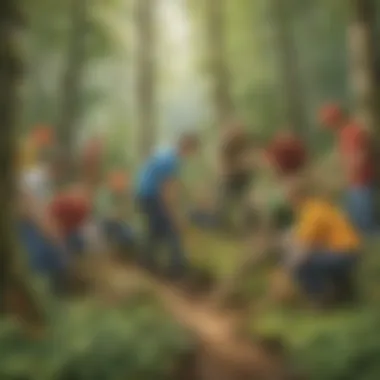
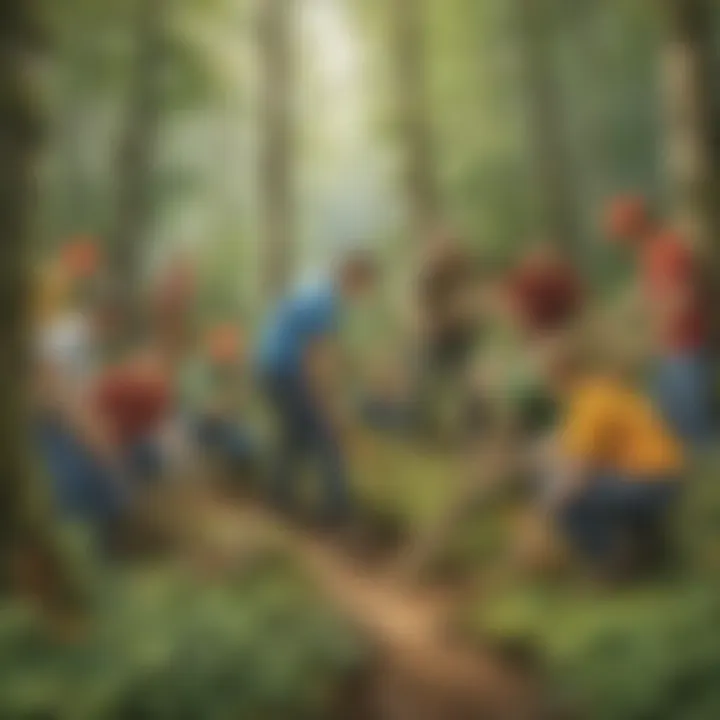
Creative Activities
Activities in this section focus on encouraging teamwork, creativity, and communication among large groups. In these interactive sessions, participants engage in a series of challenges and problem-solving tasks designed to cultivate collaboration and camaraderie. From outdoor adventures to imaginative craft projects, these activities aim to enhance group dynamics in a fun and enriching manner.
- Team Challenges: Participants work together to overcome obstacles and achieve common goals. These challenges require effective communication, strategic thinking, and trust among team members. From building structures to navigating obstacle courses, team challenges test both individual skills and group coordination.
- Creative Craft Projects: Engage participants in hands-on activities that stimulate creativity and foster collaboration. Craft projects such as creating team emblems, designing murals, or constructing sculptures encourage participants to work together towards a common artistic vision.
- Problem-Solving Tasks: Present groups with complex problems that require teamwork and critical thinking to solve. These tasks range from decoding puzzles to unraveling mysteries, challenging participants to utilize their collective intelligence and creativity.
Fun Quizzes
This section explores the use of quizzes as a lively and educational tool for large group team building activities. Quizzes offer an enjoyable way to reinforce learning, spark discussions, and enhance group cohesion through friendly competition. Participants can test their knowledge, engage with diverse topics, and strengthen their collaboration skills through interactive quiz sessions.
- Quiz Topics: Cover an array of topics in quizzes to cater to various interests and knowledge areas. From general knowledge to specific subjects, quiz topics include history, science, literature, and pop culture, providing participants with a well-rounded learning experience.
- Question Types: Incorporate different question formats to maintain engagement and encourage critical thinking. Multiple-choice, true or false, and open-ended questions challenge participants to apply their knowledge, analyze information, and communicate effectively with their team members.
- Learning Reinforcement: Utilize quizzes as a tool to solidify learning outcomes and reinforce key concepts. By engaging in fun and informative quizzes, participants not only test their understanding but also deepen their grasp of the material, creating a dynamic learning environment.
Fact-Based Articles
Delve into a range of fact-based articles that add an informative and engaging dimension to large group team building activities. These articles cover various topics, presenting information in a clear and accessible manner to foster learning and promote discussion among participants. By providing additional resources and external links, these articles offer opportunities for further exploration and learning beyond the group activities.
- Diverse Topics: Explore a wide array of subjects in the articles, including nature, history, technology, and current events. Engage participants with intriguing facts, historical anecdotes, and thought-provoking insights that spark curiosity and encourage continuous learning.
- Engaging Content: Present information in an interactive and reader-friendly format to captivate participants' attention and promote knowledge retention. By incorporating visuals, interactive elements, and engaging narratives, these articles make learning both fun and educational.
- Additional Resources: Supplement articles with links to related content and external resources for extended learning opportunities. By providing access to additional readings, videos, and activities, these resources empower participants to deepen their understanding of the topics discussed and inspire further exploration.
Introduction
In this article, we delve into the diverse spectrum of activities designed to cater specifically to large groups, ensuring that every participant has the opportunity to contribute, engage, and develop crucial teamwork skills. From outdoor challenges that test physical prowess and strategic thinking to creative problem-solving tasks that stimulate critical thinking and innovation, each activity is crafted to bring out the best in every individual and foster a sense of shared accomplishment among team members.
Let us embark on this journey together, unraveling the intricacies of team building through a series of insightful and captivating activities designed to ignite the spirit of teamwork and camaraderie among all participants.
Outdoor Challenges
Outdoor challenges play a pivotal role in this exploration of engaging and interactive team-building activities for large groups. In the corporate realm, fostering teamwork and communication among employees is crucial. Outdoor challenges provide a stimulating environment for participants to engage with one another in ways that indoor activities cannot match. The open space allows for a sense of freedom and adventure, prompting individuals to break out of their comfort zones and develop new skills. Additionally, exposure to the natural elements can instill a sense of resilience and adaptability in the team members, preparing them to face challenges head-on.
Obstacle Course
An obstacle course serves as an excellent outdoor challenge to enhance team cohesion and problem-solving skills. Participants must navigate a series of physical obstacles requiring teamwork, coordination, and strategical thinking. The course is designed to be mentally and physically engaging, pushing participants to communicate effectively and support one another throughout the course. Completion of the obstacle course fosters a sense of accomplishment and camaraderie among team members, as they work together to overcome each challenge. It also helps individuals develop resilience, perseverance, and trust within the team dynamic.
Scavenger Hunt
A scavenger hunt is a dynamic outdoor challenge that promotes collaboration, creativity, and quick thinking. Participants work together to decipher clues and solve riddles to locate hidden items within a defined area. The hunt encourages participants to communicate effectively, delegate tasks, and think critically under pressure. As teams race against time to complete the scavenger hunt, they enhance their problem-solving abilities and foster a competitive yet supportive spirit. Moreover, the outdoor setting adds an element of excitement to the activity, making it a memorable and engaging team-building experience.
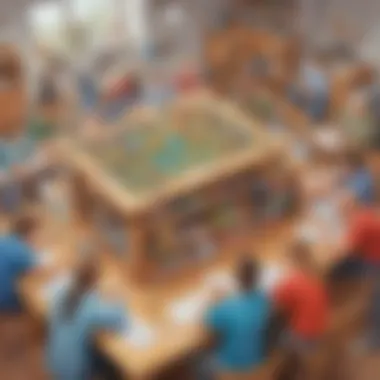
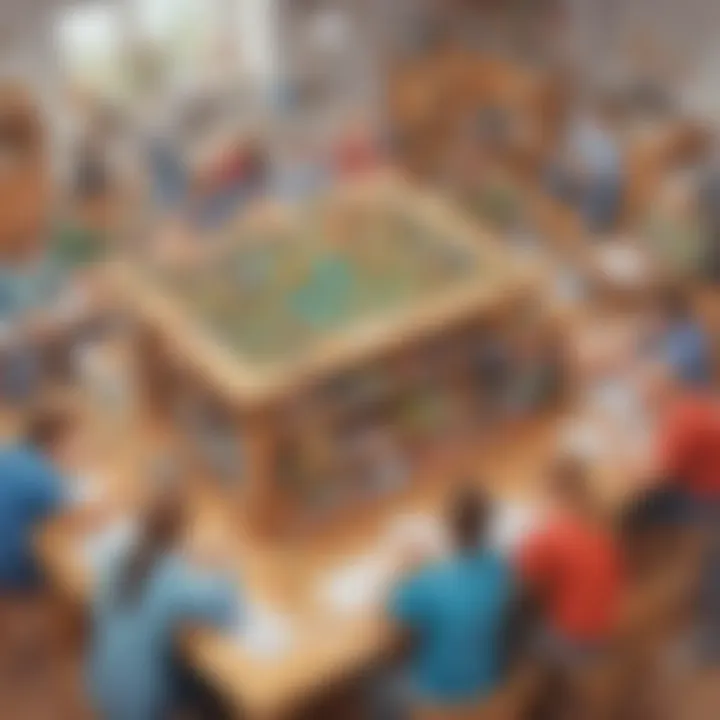
Team Relay Races
Team relay races are high-energy outdoor challenges that emphasize teamwork, coordination, and speed. Participants engage in a series of relay races where each team member must contribute to the overall success of the team. These races promote communication, trust, and strategic planning as teams strategize on how to best utilize each member's strengths. Team relay races not only encourage teamwork but also create a sense of unity and shared achievement. The competitive nature of the races instills a spirit of motivation and camaraderie, driving teams to work together towards a common goal.
: Creative Problem-Solving Tasks
Creative Problem-Solving Tasks hold a pivotal role in the realm of team building activities. These tasks serve as intellectual stimulants that encourage participants to think outside the box and collaborate effectively. Within the context of this article, focusing on Creative Problem-Solving Tasks underscores the significance of fostering innovation, critical thinking, and adaptability within a group dynamic. By engaging in such tasks, team members can enhance their problem-solving skills, creativity, and interpersonal communication. This section will delve into the various dimensions of Creative Problem-Solving Tasks, shedding light on their impact on team cohesion and performance.
: Escape Room Challenges
Escape Room Challenges are immersive activities that require teams to work together to solve a series of puzzles and riddles within a designated time frame. These challenges mimic real-life problem-solving scenarios, putting participants under pressure to communicate effectively, delegate tasks, and strategize cohesively. The Escape Room experience fosters collaboration, lateral thinking, and quick decision-making skills. Participants must think critically, overcome obstacles, and leverage each other's strengths to successfully escape the room. This section will explore the dynamics of Escape Room Challenges, highlighting their relevance in enhancing teamwork and problem-solving abilities.
: Puzzle Solving
Puzzle Solving tasks entail deciphering complex puzzles and brainteasers individually or as part of a team. These activities promote cognitive agility, pattern recognition, and logical reasoning among participants. Puzzle Solving fosters a sense of accomplishment upon cracking each puzzle, boosting morale and camaraderie within the group. Such tasks also encourage individuals to share ideas, collaborate on strategies, and appreciate diverse perspectives. This section will delve into the nuances of Puzzle Solving, emphasizing its role in honing analytical skills and fostering a collaborative spirit among team members.
: Innovative Team Building Games
Innovative Team Building Games introduce unconventional challenges that prompt participants to approach problems from fresh angles. These games encourage lateral thinking, adaptability, and creativity, fostering a culture of innovation within the team. By engaging in such games, team members can break out of routine thinking patterns, explore new solutions, and enhance their ability to collaborate under varying circumstances. This section will unpack the essence of Innovative Team Building Games, showcasing their impact on enhancing teamwork, creativity, and problem-solving skills.
Communication Exercises
Communication Exercises play a pivotal role within team building activities, acting as the cornerstone for fostering effective interaction and understanding among participants. These exercises are carefully crafted to enhance verbal and non-verbal communication skills, promote active listening, and encourage empathy within the group dynamic. By engaging in Communication Exercises, individuals learn to articulate their thoughts concisely, interpret body language, and convey ideas with clarity. This section delves into the significance of honing communication abilities within the framework of team collaboration, shedding light on the vital role it plays in strengthening bonds, resolving conflicts, and achieving common goals.
Group Storytelling (at least 250- words)
Group Storytelling presents a unique avenue for enhancing creativity, collaboration, and cohesion among team members. Through this activity, participants are encouraged to weave imaginative narratives collectively, fostering a sense of unity and shared purpose. Group Storytelling not only stimulates the creative faculties of individuals but also promotes active listening, adaptability, and the art of storytelling. It nurtures a platform for diverse perspectives to converge, enabling participants to appreciate different viewpoints and develop a cohesive story thread. This section elucidates the essence of Group Storytelling as a tool for building trust, enhancing communication, and establishing a collaborative environment.
Non-Verbal Communication Challenges (at least 250- words)
Non-Verbal Communication Challenges serve as a strategic method to heighten awareness of body language, emotions, and visual cues within interpersonal dynamics. Through these challenges, participants engage in activities that rely solely on non-verbal cues to communicate messages effectively. By enhancing non-verbal communication skills, individuals learn to decode subtle gestures, facial expressions, and physical cues, thereby strengthening their ability to understand unspoken communication. This section explores the nuances of Non-Verbal Communication Challenges in fostering empathy, improving observation skills, and deciphering hidden cues in a team setting.
Feedback and Reflection Sessions (at least 250- words)
Feedback and Reflection Sessions constitute integral components of team building activities aimed at facilitating continuous improvement and growth. These sessions offer participants a platform to provide constructive feedback, reflect on their experiences, and gain insights into personal and team performance. Through feedback mechanisms, individuals learn to offer and receive feedback graciously, identify areas for development, and appreciate the value of constructive criticism. Reflection sessions encourage self-awareness, promote accountability, and enhance communication by fostering open dialogue and mutual respect within the team. This section delves into the significance of Feedback and Reflection Sessions in promoting self-reflection, driving growth, and fostering a culture of continuous learning within a group dynamic.
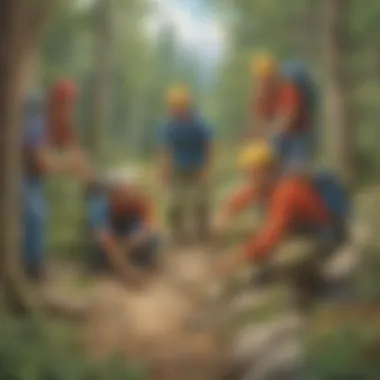
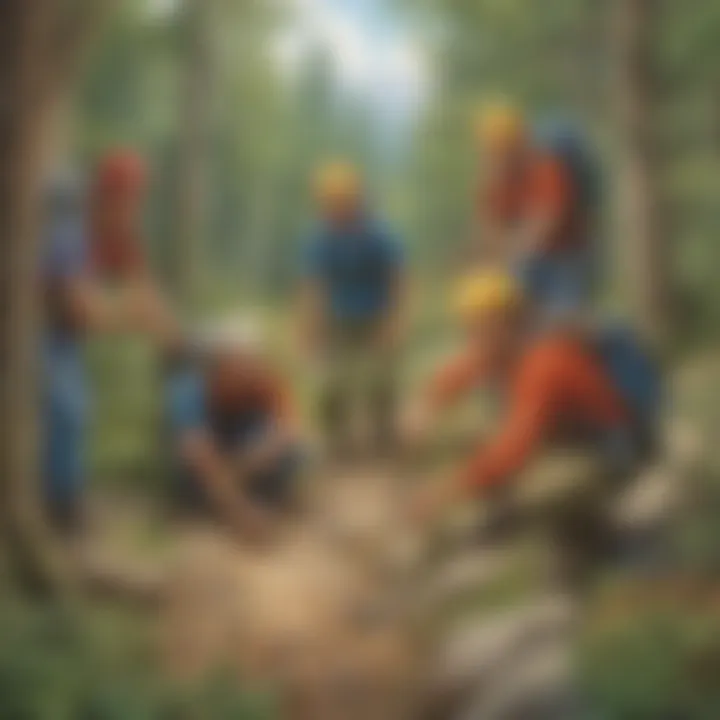
Collaborative Art Projects
Mural Painting
Mural painting is a captivating collaborative art form that fosters teamwork and creativity among participants. In this activity, individuals come together to paint a large mural that showcases their collective vision. Through mural painting, participants learn to communicate their ideas, respect each other's contributions, and create something truly remarkable as a team. The process of planning, sketching, and painting a mural provides individuals with a platform to bond, problem-solve, and appreciate the diversity of artistic expression within the group.
Sculpture Building
Sculpture building offers a hands-on experience that encourages collaboration and resourcefulness within a large group setting. Participants work together to design and construct sculptures using various materials. This activity promotes innovative thinking, coordination, and adaptability as individuals combine their skills to bring sculptural concepts to life. Sculpture building requires effective communication, organization, and a shared vision, allowing participants to explore their creativity while honoring the contributions of every team member.
Craft Workshops
Craft workshops provide a dynamic environment for large groups to engage in collaborative artistry through diverse hands-on projects. From collage-making to DIY crafts, participants have the opportunity to collaborate, experiment, and learn from each other in a supportive setting. Craft workshops encourage teamwork, problem-solving, and mutual encouragement as individuals work together to complete intricate tasks. Engaging in craft workshops fosters creativity, communication, and a sense of accomplishment, enhancing the overall team building experience.
Problem-Solving Challenges
Problem-solving challenges are an indispensable aspect of team building activities. They offer a unique opportunity for participants to collaborate, communicate, and think critically in a group setting. These challenges are designed to stimulate the mind, encourage creativity, and enhance problem-solving skills among team members. By engaging in problem-solving challenges, participants can improve their lateral thinking, decision-making abilities, and teamwork skills.
When considering problem-solving challenges for team building activities, it is essential to choose tasks that cater to the group's cognitive abilities and interests. Tailoring the challenges to the participants ensures maximum engagement and enjoyment. Additionally, incorporating a variety of challenges with varying levels of difficulty can accommodate different skill sets within the group. This diversity promotes inclusivity and equal participation among all team members.
One of the popular problem-solving challenges often included in team building activities is Brain Teasers.
Brain Teasers
Brain teasers are intriguing puzzles or riddles that require creative thinking and logical reasoning to solve. These challenges are excellent for stimulating the brain, fostering out-of-the-box thinking, and promoting teamwork. Brain teasers come in various forms, such as mathematical puzzles, word problems, or visual riddles, offering a diverse range of challenges for participants to enjoy.
Engaging in brain teasers during team building activities can help improve cognitive function, memory retention, and problem-solving skills. The collaborative nature of solving brain teasers encourages communication, idea sharing, and mutual support among team members. Furthermore, successfully tackling brain teasers instills a sense of accomplishment and boosts morale within the group.
When incorporating brain teasers into team building activities, organizers should consider the difficulty level to ensure a balance between challenge and achievability. Adjusting the complexity of the brain teasers based on the group's dynamics can enhance the overall experience and promote meaningful interactions among participants.
Another engaging problem-solving challenge commonly featured in team building activities is the Rope Course.
Rope Course
A rope course is a physically and mentally challenging activity that involves navigating obstacles and completing tasks while suspended above the ground. Rope courses test participants' coordination, balance, and problem-solving abilities in a thrilling and adventurous setting. These challenges require teamwork, communication, and trust among team members to overcome obstacles successfully.


Participating in a rope course fosters an environment of mutual reliance and encouragement within the group. Team members must collaborate effectively to navigate the course, support each other through obstacles, and reach the common goal. The adrenaline rush and sense of achievement experienced during a rope course can strengthen bonds among team members and boost morale.
Organizers should prioritize safety when planning a rope course activity, ensuring that all participants receive proper instructions and equipment. Supervision by trained professionals is essential to maintain a secure environment and prevent accidents during the course. Additionally, offering variations in the course's difficulty levels can accommodate different comfort zones and skill levels among participants.
Lastly, Logic Puzzles present another engaging avenue for problem-solving challenges during team building activities.
Logic Puzzles
Logic puzzles challenge participants to use deductive reasoning and critical thinking to solve complex problems. These puzzles often require individuals to analyze information, make inferences, and draw logical conclusions to reach the correct solution. Logic puzzles come in various formats, including grid-based puzzles, lateral thinking puzzles, and pattern recognition tasks, offering a diverse range of mental challenges for participants.
Engaging in logic puzzles during team building activities can improve participants' analytical skills, decision-making abilities, and attention to detail. Collaborative puzzle-solving encourages idea exchange, strategic planning, and shared problem-solving approaches among team members. Successfully solving logic puzzles promotes a sense of achievement, boosts confidence, and enhances the group's problem-solving capabilities.
Organizers should select logic puzzles that align with the group's familiarity with puzzle-solving activities and offer a mix of difficulty levels to cater to diverse skill sets. Providing adequate time for participants to work on logic puzzles and fostering a supportive atmosphere for collaboration can elevate the overall experience and foster teamwork among team members.
Team Bonding Games
Trust Falls
Trust Falls stand out as one of the quintessential activities in team bonding games. In this exercise, participants are required to demonstrate trust by falling backward into the waiting arms of their team members. The significance of Trust Falls lies in fostering trust, enhancing interpersonal relationships, and promoting a culture of support and reliance within the team. Through this activity, individuals learn to trust one another, overcome personal barriers, and develop a sense of vulnerability that strengthens the team's bond. Trust Falls not only encourage trust but also instill a sense of accountability, empathy, and cooperation among participants.
Human Knot
Human Knot presents an engaging and challenging team bonding game that requires participants to untangle themselves from a human knot without letting go of each other's hands. This activity promotes teamwork, communication, and problem-solving skills as individuals work together to unravel the intricate knot. Human Knot fosters trust and unity among team members, emphasizing the importance of cooperation, coordination, and effective communication in achieving a common goal. By navigating through the complexities of the human knot, participants learn to listen, strategize, and collaborate cohesively to untangle themselves, thereby reinforcing the bonds of camaraderie within the team.
Minefield
Among the array of team bonding games, Minefield stands out as a dynamic and challenging activity that tests participants' communication and trust. The objective of this game is for individuals to navigate through a 'minefield' filled with obstacles using verbal guidance from their teammates. Minefield enhances communication skills, fosters trust, and promotes effective decision-making within the team. Through clear and concise communication, participants learn to rely on their teammates, create strategies, and navigate challenges collectively. Minefield not only enhances teamwork but also cultivates a supportive and cohesive team environment where individuals can collaborate under pressure to achieve a common goal.
Physical Activities
Physical activities play a crucial role in large group team building activities. Engaging in physical challenges helps participants develop teamwork skills, communication, and strategic thinking. The element of physicality adds an exciting dimension to team building, encouraging participants to collaborate effectively towards a common goal. By incorporating physical activities into team building programs, organizers can promote a healthy sense of competition and camaraderie among participants. Moreover, these activities boost morale and promote physical fitness, contributing to overall well-being and mental alertness.
Tug of War
Tug of War is a classic team building activity that requires strength, strategy, and coordination. This game fosters teamwork as participants must collaborate to pull their team towards victory. It promotes communication as team members strategize and work together to outplay their opponents. Tug of War also enhances trust among participants as they rely on each other's strength and coordination to win the game. Moreover, this activity can help develop leadership skills as team members take on different roles and responsibilities within the team.
Ultimate Frisbee
Ultimate Frisbee is a dynamic team sport that promotes agility, teamwork, and quick decision-making. It requires players to communicate effectively to move the Frisbee down the field and score points. This activity enhances problem-solving skills as teams strategize their moves to outmaneuver the opposing team. Ultimate Frisbee also fosters a sense of camaraderie among participants as they work together towards a common objective. Additionally, the fast-paced nature of the game encourages participants to think on their feet and adapt to changing situations, promoting resilience and agility.
Kickball
Kickball is a fun and inclusive team building activity that combines elements of soccer and baseball. It promotes teamwork as players must coordinate their movements to score runs and win the game. This activity enhances communication skills as team members strategize and communicate on the field. Kickball also encourages healthy competition among participants, driving them to give their best while enjoying the game. Moreover, it fosters a sense of belonging and unity as participants work together towards achieving a shared goal. Overall, Kickball is a thrilling and engaging team building activity that promotes teamwork, communication, and sportsmanship.







